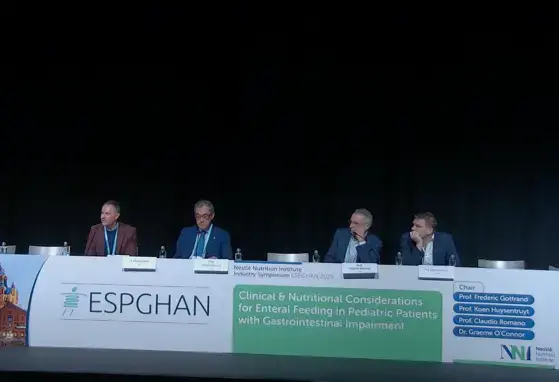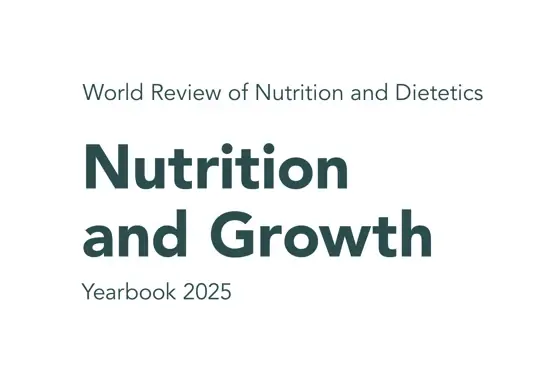Nutritional Issues In Sickle Cell Anemia
INTRODUTION
Sickle Cell Anemia (SCA) is the most important monogenic hereditary illness in the world. Its high prevalence and severity makes this haemoglobinopathy a great burden in Global Health. According to WHO 1, over 300,000 children are born yearly affected by haemoglobinopathies, most of them in low and medium income countries and about three quarters in Africa. For example in Angola, with 20 million inhabitants, 12000 affected children are estimated to be born yearly; and one dedicated clinic in the Pediatric Hospital of Luanda enrolls 1,500 new patients yearly. Because life expectancy is low (less than 30 years), SCA affects mainly children and young people.2 Currently in Africa it is estimated that 50-80% of children with SCA do not reach adulthood.3
The peculiar pathophysiology of SCA includes a shortened lifespan of red blood cells to less than 25%, vascular blockage, stroke, ischaemic pain (particularly in the hands, feet, limbs and abdomen), compensatory overproduction of red blood cells by the bone marrow and accelerated basal metabolic rate. Most patients are unable to restore their haemoglobin level above 6-8 g/dl. Thus affected children and young people have greater energy requirements and suffer from chronic severe anaemia. Optimal management of these children therefore demands attention not only to the vascular and immunologic aspects of the disease but also to their nutritional requirements.
ANTHROPOMETRY IN SCA
Growth curves show affected children as being on average shorter, lighter and with lower body mass as compared with their peers as well as having delayed sexual maturation, even if they consume a diet apparently similar to the other children.4 These findings may be attributed to two key underlying causes: (a) 6-22% higher resting energy expenditure (REE) due to increased turn-over of proteins in the order of 44-100% in the hyperactive bone marrow; and (b) Lesser intake of calories (80% in steady state, down to 39% during painful crises).5
NUTRITIONAL REQUIREMENTS IN SCA
MACRONUTRIENTS
ENERGY
The findings of higher resting energy expenditure are indicative of the need for greater caloric intake by children with SCA. Studies of protein and calorie supplementation via nasogastric feeding6 have resulted in clinical improvement and growth – thus signaling the existence of a malnutrition problem. However, these findings have not generally been translated into practice.
WATER
Dehydration and haemoconcentration, particularly during febrile states, are known precipitants of painful crises.7 Thus adequate hydration at all times and use of intravenous fluids when indicated are of critical importance in preventing water imbalance.
AMINO ACIDS AND FATTY ACIDS
Experimental assays in transgenic Berkeley sickle mice with high protein diet improved the rate of weight gain and reduced circulating levels of inflammatory proteins, compared with mice fed on a normal diet.8 Clinical assays with 3 amino acids (arginine, glutamine and citruline) showed beneficial clinical effects by arginine and glutamate.9
MICRONUTRIENTS
IRON
Some erroneous dietary advice is given currently due to popular misconceptions about iron overload in this condition. In Angola some professionals and alternative care agents discourage the consumption of beans and other legumes on the assumption of its higher iron content. This is deleterious particularly for children from poor families where legumes replace in great extent the missing animal proteins in their diet. It has been shown that ferritin in the not transfused patients is normal or slightly raised10 and could be low in poor families, expressing deficient consumption of available sources of iron.
ZINC
In one study in 1998, 104 children presented plasma levels of Zinc that were often very low; and the low levels were correlated with poor linear, bone and muscular growth as well as delay sexual maturation.1 However, zinc supplementation is not an option9 (according to nutritional advice given in 2010 by the NIH).
MAGNESIUM AND CALCIUM
Plasma magnesium levels may be normal in SCA patients, but low levels (with an increase in the Ca/Mg ratio) correlate with increased sickling.12 Magnesium has been assessed for intravenous treatment of sickle crises in associated with hydroxyurea.8
OTHER MINERALS
The clinical significance of high plasma levels of copper in SCA is not clear. High plasma levels of copper are linked with a parallel decrease in zinc.11 Low levels of selenium and glutathione peroxides could be detrimental by reducing the cellular anti-oxidant potential13.
VITAMINS
FOLATE AND VITAMINS B12
Daily supplementation with folic acid is still the rule in African clinics. The rationale is that increased haemolysis depletes folic acid (and vitamin B12) and a secondary megaloblastic anemia occurs. Nonetheless, assay studies in affected children showed lower levels of folic acid and vitamin B12 in, respectively, 15% and 3% of cases, even in those having a normal or supplemented diet.14 Controlled clinical assays in children supplemented and unsuplemented with folic acid showed no difference in haemoglobin or red blood cell values between the two groups.15, 16
OTHER VITAMINS
Deficiency of Vitamin A is prevalent in SCA patients and this appears to have clinical repercussions leading to more hospital admissions.17 However, vitamin A supplementation does not increase the plasma levels of Vitamin A.18 In spite of the known beneficial action of vitamins C and E on anti-oxidant cellular potential, no clinical indication was found for these two vitamins in the management of SCA patients.8 Some studies correlate the low levels of vitamin D found in the plasma of these patients with the low bone mineral content found in adults.8 However this finding has yet to be confirmed in children from tropical countries who have greater exposure to the sun. Low levels of pyridoxine (vitamin B6) found in many patients reflect poor nutritional state and could increase hemolysis.19
IN CONCLUSION
Many studies in the literature provide a solid scientific basis for the support and care of children with SCA with special regard to a) nutritional supplementation for preventive care, growth and wellbeing; and b) treatment of acute crises. However, many gaps and controversies still remain as research progress in this area has been limited by studies with small numbers, methodological weaknesses and a scarcity of corroborative studies.20 There is therefore a critical need to for strengthening scientific resources and competencies in the less developed countries where the majority of SCA patients live with a view to bringing real progress and benefit to the sufferers of this severe and disabling illness.
REFERENCES
1 EB 117/R3: Sickle Cell Anaemia, WHO, 2006
2 Brousse, V, Makani, J, and Rees, DC. Management of sickle cell disease in the community. BMJ. 2014; 348: g1765
3 Makani, J, Cox, SE, Soka, D et al. Mortality in sickle cell anemia in Africa: a prospective cohort study in Tanzania. PLoS One. 2011; 6: e14699
4Orah S. Platt, Wendy Rosenstock, Mark A. Espeland. Influence of Sickle Hemoglobinopathies on Growth and Development. N Engl J Med 1984; 311:7–12.)
5Malinauskas BM, Gropper SS, Kawchak DA, et al. Impact of acute illness on nutritional status of infants and young children with sickle cell disease. J. Am. Diet. Assoc., 2000; 100: 330-334
6 Heyman MB, Vichinsky E, Katz R, Gaffield B, Hurst D, Castillo R, Chiu D, Kleman K, Ammann AJ, Thaler MM, et al. Growth retardation in sickle-cell disease treated by nutritional support. Lancet. 1985 Apr 20; 1(8434):903-6
7Sejeant GR, Sergeant BE. Sickle Cell Disease, Oxford, 2001
8Hyacinth HI, Gee BE, Hibbert JM. The Role of Nutrition in Sickle Cell Disease. Nutrition Metabolic Insights, 2010; 3:57-67
9 Nutrition and Hemoglobinopathies Working Group. NIH, August 2010
10 Stettler N1, Zemel BS, Kawchak DA, Ohene-Frempong K, Stallings VA. Iron status of children with sickle cell disease. Journal of Perenteral and Enteral Nutrition, 2001 Jan-Feb; 25(1):36-8
11Leonard MB1, Zemel BS, Kawchak DA, Ohene-Frempong K, Stallings VA. Plasma zinc status, growth, and maturation in children with sickle cell disease, J Pediatr. 1998 Mar;132(3 Pt 1):467-71
12 Zehtabchi SI, Sinert R, Rinnert S, Chang B, Heinis C, Altura RA, Altura BT, Altura BM. Serum ionized magnesium levels and ionized calcium-to-magnesium ratios in adult patients with sickle cell anemia. Am J Hematol. 2004 Nov; 77(3):215-2
13 Natta C.L., Chen L.C., Chow C.K. Selenium and Glutathione Peroxidase Levels in Sickle Cell Anemia. Acta Haematol, 1990; 83:130–132
14 Kennedy TSI, Fung EB, Kawchak DA, Zemel BS, Ohene-Frempong K, Stallings VA. Red blood cell folate and serum vitamin B12 status in children with sickle cell disease. J Pediatr Hematol Oncol. 2001 Mar-Apr;23(3):165-9
15 LM Rabb, Yvonne Grandison, Karlene Mason. A trial of folate supplementation in children with homozygous sickle cell anaemia. Brit J Haematology, 1983; 54:589-594
16 Rosa Muzumbo, Luis Bernardino, Papel do Ácido Fólico. No manuseio dos doentes drepanociticos: ensaio de 2 modalidade de administração, Jornal Angolan de Medicina, 2013;1: 18-21
17 Schall JI, Zemel BS, Kawchak DA, Ohene-Frempong K, Stallings VA, Vitamin A status, hospitalizations, and other outcomes in young children with sickle cell disease. Pediatr. 2004 Jul; 145(1):99-106
18 Dougherty KA, Schall JI, Kawchak DA, Green MH, Ohene-Frempong K, Zemel BS, Stallings VA. No improvement in suboptimal vitamin A status with a randomized, double-blind, placebo-controlled trial of vitamin A supplementation in children with sickle cell disease. J Clin Nutr. 2012 Oct; 96(4):932-40. Epub 2012 Sep 5
19 Nelson MC, Zemel BS, Kawchak DA, Barden EM, Frongillo EA Jr, Coburn SP, Ohene-Frempong K, Stallings VA. Vitamin B6 status of children with sickle cell disease. J Pediatr Hematol Oncol. 2002 Aug-Sep; 24(6):463-9
20 Redd JD, Redding-Lallinger, and Orringer EP. Nutrition and Sickle Cell disease. Am. Journal of Hematology, 1987; 24; 441-455
If you liked this post you may also like

Practical Approaches to Enteral Feeding for Children with Gastrointestinal Impairment

Increasing the Presence of Artificial Intelligence (AI) in Medicine

Clinical & Nutritional Considerations for Enteral Feeding in Pediatric Patients with Gastrointestinal Impairment
